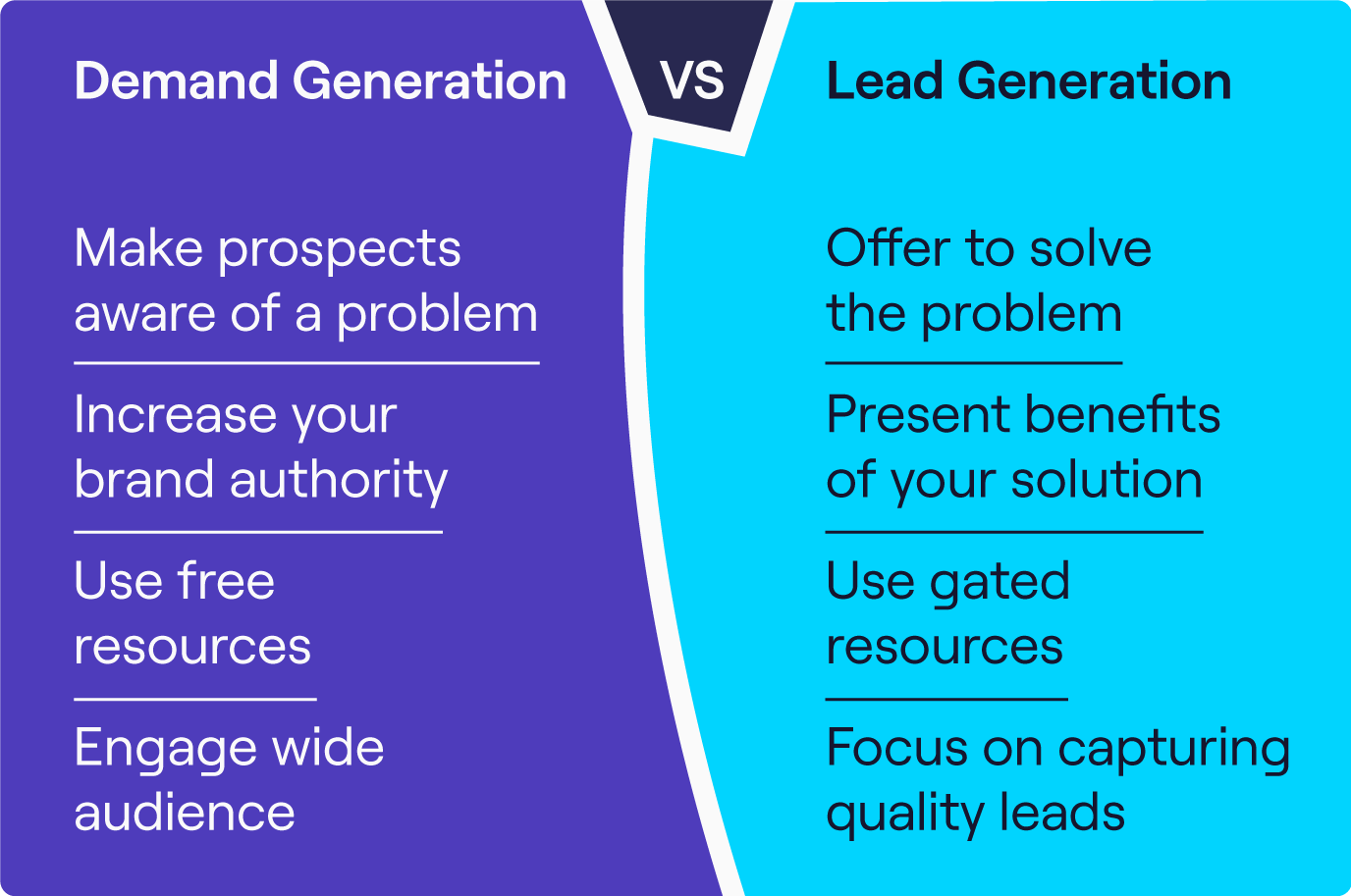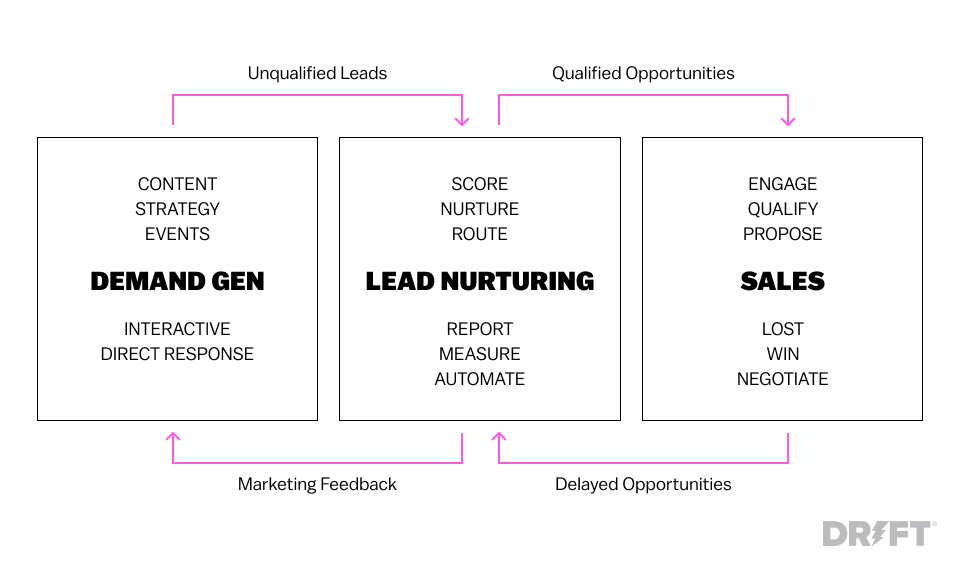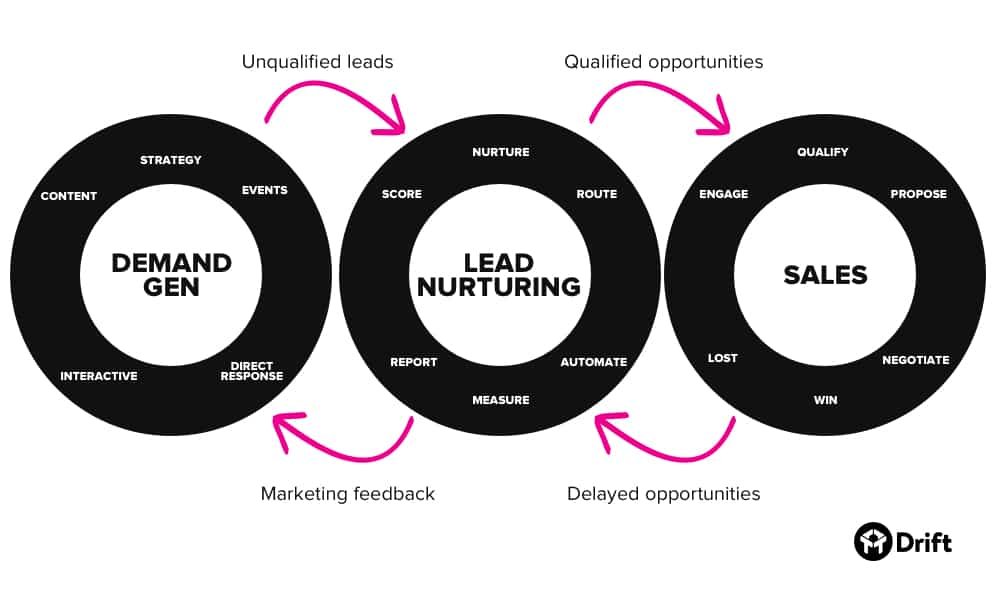Demand generation focuses on creating interest and awareness in a product or service, while lead generation involves identifying and attracting potential customers. Both are essential components of the sales and marketing process.
Effective demand generation strategies aim to cultivate interest in a brand, product, or service, ultimately leading to the generation of quality leads. This is achieved by leveraging various tactics such as content marketing, social media outreach, and targeted advertising. Lead generation, on the other hand, is about capturing the interest of potential customers and converting them into prospects.
By implementing a well-rounded approach that integrates both demand and lead generation tactics, businesses can effectively engage and convert their target audience into loyal customers.
The Difference Between Demand Generation And Lead Generation
Demand generation and lead generation are two terms often used interchangeably in marketing, but they have distinct meanings and purposes. Understanding the difference between demand generation and lead generation is crucial for any business looking to optimize its marketing efforts.
Defining Demand Generation
Demand generation is the process of creating awareness and interest in your product or service among your target audience. It focuses on generating demand for your offerings through various marketing tactics and channels. The primary goal of demand generation is to attract prospects and build a pipeline of leads to nurture.
Demand generation activities include:
- Content marketing to educate and engage prospects
- Search engine optimization (SEO) to improve organic visibility
- Social media marketing to reach and connect with the target audience
- Advertising campaigns to create awareness and drive traffic
- Email marketing to nurture leads and build relationships
Demand generation aims to create a buzz around your brand and establish your credibility as a trusted source of valuable information. It focuses on capturing the attention and interest of your audience, even if they may not be ready to make a purchase immediately.
Defining Lead Generation
Lead generation, on the other hand, is the process of identifying and capturing potential customers who have expressed interest in your product or service. It involves collecting contact information from these leads and nurturing them through targeted marketing efforts in order to convert them into paying customers.
The key objective of lead generation is to obtain valuable contact details, such as email addresses, phone numbers, or social media profiles, to initiate a communication and develop a relationship. This enables businesses to further qualify and nurture leads, moving them through the sales funnel towards a purchase decision.
Lead generation strategies include:
- Forms and landing pages to capture lead information
- Lead magnets, such as eBooks or whitepapers, to incentivize conversions
- Webinars or events to engage prospects and collect contact details
- Lead scoring and segmentation to prioritize leads for personalized marketing
- Automated email workflows to nurture leads and guide them towards a purchase
Lead generation focuses on identifying potential customers who are more likely to convert into sales. It helps businesses build a qualified lead database and streamline their sales process, ultimately driving revenue growth.
Goals And Strategies
In demand generation and lead generation, setting clear goals and implementing effective strategies are crucial for success. Each aspect requires a tailored approach to meet specific objectives and engage with the target audience. Let’s delve into the distinct goals and strategies for both demand generation and lead generation.
Demand Generation Goals And Strategies
- Brand Awareness: Increase visibility and recognition of the brand in the market.
- Engagement: Foster meaningful interactions with potential customers through valuable content and experiences.
- Lead Nurturing: Build relationships with prospects by providing relevant information and resources.
- Conversion: Drive targeted traffic to conversion points, encouraging actions such as signing up for a newsletter or downloading a whitepaper.
Lead Generation Goals And Strategies
- Lead Capture: Acquire potential customer information through forms, downloads, or other means of contact.
- Qualification: Evaluate and qualify leads based on specific criteria to prioritize the most promising prospects.
- Nurturing: Provide tailored content and communication to guide leads through the sales funnel towards conversion.
- Conversion: Facilitate the transition of leads into customers through compelling offers and personalized interactions.
Tactics And Tools
In the competitive world of business, demand generation and lead generation are vital components for attracting potential customers and converting them into sales. To effectively execute these strategies, one must employ the right tactics and tools that can maximize their impact and yield positive results.
Demand Generation Tactics And Tools
Demand generation tactics encompass a wide array of activities that aim to create interest and awareness about a product or service. These can include content marketing, social media engagement, influencer partnerships, and personalized email campaigns. Through these strategies, businesses can generate demand and drive prospects towards the sales funnel.
Tools for demand generation must facilitate targeted outreach and engagement. Utilizing customer relationship management (CRM) software, marketing automation platforms, and analytics tools enables businesses to effectively track, measure, and optimize their demand generation efforts. These tools provide valuable insights into customer behavior and preferences, allowing for more tailored and impactful marketing activities.
Lead Generation Tactics And Tools
Lead generation tactics are designed to capture the interest of potential customers and gather their information for further nurturing. This can be achieved through strategies such as gated content, interactive webinars, and compelling call-to-action buttons. These tactics aim to entice prospects to share their details in exchange for valuable content or resources.
Tools for lead generation play a crucial role in managing and nurturing captured leads. Customer relationship management (CRM) systems, lead scoring software, and email marketing platforms help businesses in organizing, prioritizing, and engaging with their leads. These tools empower businesses to build meaningful relationships and guide leads through the buyer’s journey.

Credit: www.cognism.com
Measuring Success
One of the key aspects of a successful demand generation and lead generation strategy is the ability to measure success. Without proper measurement, it becomes difficult to determine the effectiveness of your efforts and make informed decisions for future campaigns. This section will discuss the crucial metrics to track for both demand generation and lead generation, providing valuable insights into the performance of your marketing efforts.
Metrics For Demand Generation
The success of your demand generation efforts can be gauged using specific metrics that indicate the overall effectiveness and impact of your marketing campaigns. Monitoring and analyzing these metrics will help you identify areas of improvement and optimize your demand generation strategy. Here are some key metrics to consider:
- Website Traffic: The number of visitors to your website indicates the level of interest generated by your marketing efforts.
- Engagement Rate: This metric measures the level of interaction and interest users have with your content, such as the number of comments, shares, or likes.
- Conversion Rate: The percentage of website visitors who take the desired action, such as filling out a form or subscribing to a newsletter, represents the effectiveness of your call-to-action.
- Cost per Lead (CPL): Calculating the cost incurred to acquire a lead will help you assess the efficiency and profitability of your demand generation efforts.
- Lead Quality: Evaluating lead quality based on factors like lead source, demographics, and behavior will provide insights into the effectiveness of your targeting and segmentation strategies.
Metrics For Lead Generation
For lead generation, the focus shifts from generating interest to converting leads into customers. To measure the success of your lead generation efforts, monitor the following metrics:
- Lead-to-Customer Conversion Rate: This metric indicates the percentage of leads that successfully convert into paying customers and helps measure the effectiveness of your lead nurturing and sales processes.
- Cost per Acquisition (CPA): Determining the cost involved in acquiring a new customer will enable you to assess the profitability and efficiency of your lead generation campaigns.
- Time to Conversion: Tracking the time it takes for a lead to convert into a customer provides insights into your sales cycle and allows you to optimize your nurturing campaigns.
- Customer Lifetime Value (CLV): Calculating the predicted revenue a customer will generate over their lifetime helps you understand the long-term value of your lead generation efforts.
- Lead Source Performance: Analyzing the performance of different lead sources, such as social media, referrals, or email campaigns, can help you identify the most effective channels for generating high-quality leads.
By consistently tracking and analyzing these metrics for both demand generation and lead generation, you can gain valuable insights into the effectiveness of your marketing efforts. This data-driven approach allows you to make informed decisions, optimize your strategy, and drive sustainable business growth.
Integration And Alignment
Aligning Demand Generation With Lead Generation
Demand Generation and Lead Generation are intertwined strategies that, when aligned, can drive optimal results for businesses.
Integrating Demand And Lead Generation Efforts
By merging Demand Generation with Lead Generation efforts, companies can cultivate a seamless customer acquisition process.

Credit: blog.hubspot.com

Credit: www.drift.com
Frequently Asked Questions On Demand Generation Lead Generation
What Is Demand Generation And Lead Generation?
Demand generation creates awareness and interest in products or services. Lead generation collects contact information of potential customers for sales follow-up.
What Is A Demand Lead Generation Job Description?
A demand lead generation job description outlines the responsibilities of a professional who works to identify and attract potential customers. This role involves conducting research, implementing marketing strategies, and generating leads through various channels to drive business growth.
What Is On Demand Generation?
On-demand generation refers to the instant availability of services or products as and when needed. It fulfills consumer demands on the spot. This kind of service is popular in today’s fast-paced world and is beneficial for both consumers and businesses.
What Is The Difference Between Demand Generation And Brand Generation?
Demand generation focuses on generating immediate interest and leads, while brand generation aims to build long-term brand awareness and loyalty. Both are crucial for business success.
Conclusion
To sum up, demand generation and lead generation are crucial aspects of any successful marketing strategy. By effectively increasing brand awareness and capturing potential customer information, businesses can generate valuable leads and drive revenue growth. With the right combination of targeted content, engaging outreach programs, and data-driven insights, organizations can optimize their demand and lead generation efforts.
Embracing innovative and sustainable approaches will position businesses for long-term success in today’s highly competitive market.




